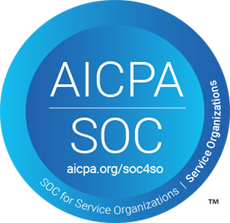BOISE, Idaho and LAS VEGAS, Nevada—July 12, 2016—Kno2™, the company that optimizes patient document exchange for everyone in healthcare, and HealtHIE Nevada, a private health information exchange run by non-profit HealthInsight Nevada, have announced a partnership to extend the capabilities of the HIE to post-acute, behavioral health and long-term support services organizations. The agreement will allow providers that do not have access to electronic document exchange to leverage the Kno2 portal to connect with hospitals, primary care physician offices and other healthcare providers without resorting to fax.
Patients with chronic conditions are increasingly being treated by community-based providers, outside the walls of an acute-care hospital. Such providers can often offer high-quality, high-value care in a setting close to the patient’s home. However, when it comes to health information technology, providers such as diabetes education counselors, behavioral health therapists, and rehabilitation centers may lag behind hospitals and physicians’ offices. The disparity in health IT capabilities can hobble continuity of care for complex patients as they transition among different health care settings.
HealtHIE Nevada and Kno2 are joining forces to help erase these disparities by enabling community providers to exchange documents electronically with doctors and hospitals, regardless of the format of the original document. Whether a document originates from a fax machine, a printer, a scanner or an electronical medical record (EMR), the Kno2 platform can exchange it as an unstructured or structured document that is compatible with hospital and ambulatory EMRs. Community providers without EMRs can receive electronic documents from care partners via Kno2’s web-based portal.
Kno2 is a pioneer in the development of electronic clinical document exchange. The founders of Kno2 (then called Osmosyz) were part of the initial team that formed the Clinical Document Architecture for Common Document Types (CDA4CDT) initiative in 2005. Since that time, CDA4CDT has grown into a national standards consortium for interoperable healthcare documents called the Health Story Project. In 2010, Kno2 was a co-author in developing the unstructured CDA format that provided the missing link to translate simple unstructured documents, such as PDFs, into semi-structured document standard. The Unstructured CDA was incorporated as the ninth template in the C-CDA implementation guide referenced by Meaningful Use. This document template opened up the way for all document types to be able to be exchanged electronically between EMRs, and drive fax out of the healthcare system. In addition, the template has enabled a large swath of providers without certified EMRs, including long-term support services providers, to ease exchange compatibility with doctors and hospitals with varied EMR systems.
“We are proud to partner with HealtHIE Nevada to enable connectivity for the last mile of care,” said Kno2 President and Chief Technology Officer Therasa Bell. “New electronic document exchange capabilities will make it easier for long-term support services providers to receive and send patient information, ultimately improving both care transitions and patient outcomes.”
HealtHIE plans to sponsor subscriptions to Kno2’s exchange capabilities for three groups of community-based providers, starting with diabetes education counselors. These subscriptions will enable them to both send and receive documents via Direct Message, including vital information on care transitions and post-acute care plans. Ease of transmission will keep hospitals and doctors in the loop about patients’ health status post-discharge or between visits. The ultimate goal is to help reduce readmissions, adverse medication events, and gaps in care.
“HealtHIE Nevada is focused on solving real healthcare problems through technology,” HealtHIE Nevada Director Erick Maddox said. “Our partnership with Kno2 increases our capacity to offer true interoperability for those not already connected, improve exchange of timely data, get rid of reliance on fax, and upgrade providers at the edge of the network to a real-time method of exchange.”




